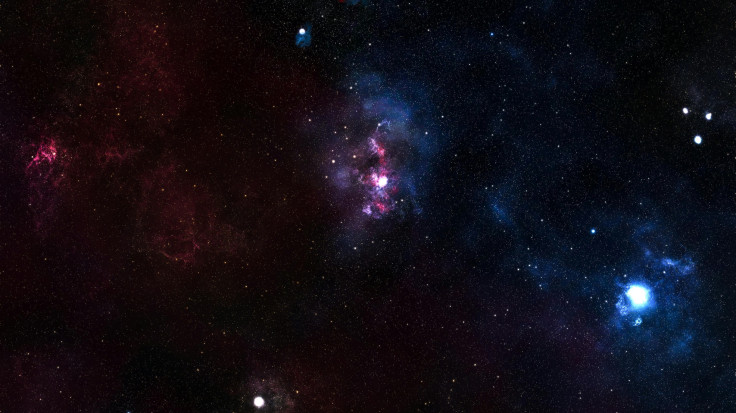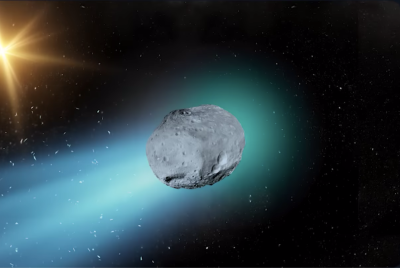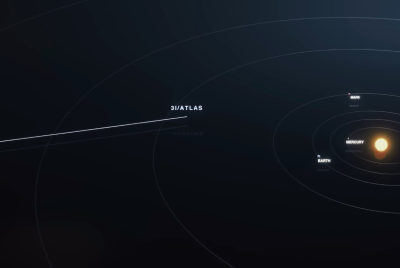3I/ATLAS: 'Jet Firing Toward The Sun' Seen In Stunning New Gemini Image
3I/ATLAS returns to view: how to watch tonight's livestream, where to find it, and why this window matters.

Tonight, before dawn breaks, an interstellar visitor steps back into view. 3I/ATLAS has cleared the solar glare, and a new observing window opens for professional and backyard observers alike.
This isn't a routine skywatch. It's a rare, global hand-off: as Earth turns, one set of telescopes will pick up where the previous night left off, building a continuous portrait of an object that continuously surprises those who study it.
3I/ATLAS Is Back: Why This Window Matters
For the first time since slipping behind the Sun's brightness, 3I/ATLAS returns to ground-based reach, and astronomers expect the clearest imaging yet.
After weeks of fragmented snapshots and shutdown delays, tonight marks the start of a run that could define how we study interstellar visitors in real time.
A sustained sequence of night‑by‑night images will enable researchers to measure subtle changes in brightness, tail geometry, rotation, and any hints of fragmentation with unprecedented continuity.
3I/ATLAS: How And When To Watch Live
The Virtual Telescope Project will lead coverage with a public livestream at 11:15 p.m. ET on Nov. 16 (0415 GMT on Nov. 17), broadcasting from Manciano, Italy. Its robotic telescopes will deliver real-time views as the object accelerates away from the Sun.
🚨 3I/ATLAS: IMPORTANT UPDATE
— 3I/ATLAS WHISTLE BLOWER (@3IATLASEXPOSED) November 16, 2025
Amateur Astronomer Ray's Astrophotography just captured this image of 3I/ATLAS from hes backyard!
Making a striking resemblance to leaked images that have gone viral.
Keep watching the skies folks... 🛸#3IATLAS #3IAtlasExposed #Space #UFOx pic.twitter.com/0dTWF1lLar
3I/ATLAS: Where To Look In The Sky
Right now, 3I/ATLAS rises in the early morning, just above the eastern horizon in Virgo. With a magnitude of +10.9, it's invisible to the naked eye, yet small amateur scopes can resolve a bright, softly glowing coma against pin-sharp stars.
If conditions allow, try modest magnification and longer integration on cameras to tease out the delicate ion tail. Expect views to improve night by night as its geometry shifts further from the Sun and closer to our line of sight.
3I/ATLAS: The Science Stakes Are Rising
This is the moment for detailed measurement. Researchers are tracking brightness behaviour, tail morphology, thermal emission, rotation, and any post‑perihelion fragmentation signatures.
The stakes are clear. Past interstellar visitors—ʻOumuamua and 2I/Borisov—posed difficult questions about their origins. 3I/ATLAS has already added layers of complexity, especially in its evolving tail direction, luminosity, and emerging jet structures.
A surge of stacked exposures, long integrations, and worldwide time-lapses will allow teams to test models and refine planetary‑defence playbooks.
3I/ATLAS: The 33‑Day Countdown To Close Approach
The timing is critical. We are 33 days from 19 December, when 3I/ATLAS makes its closest approach to Earth.
That runway provides observers a rare chance to build a continuous arc of data through late November and deep into December. The outcome could be one of the most densely documented interstellar events on record.
3I/ATLAS: What The Livestream Will Show
Expect a crisp look at the central coma and an ion tail drawn out by the solar wind. Virtual Telescope Project founder Gianluca Masi recently captured a striking frame on 11 November that showcased the comet's glow and lengthening, smoke‑like tail.
"3I/ATLAS has now cleared the solar glare, and we are once again able to observe it from Earth," said Gianluca Masi, founder of the Virtual Telescope Project. "This is the moment astronomers have been waiting for."
3I/ATLAS: What Happens Next
Tonight is the start of a collective effort. As telescopes in Europe, North America, South America, Asia, and Australia pass the baton through the dark hours, the data flow should accelerate.
The public wants answers. Scientists want clarity. And amateur observers—now more essential than ever—can help fill gaps with sharp frames, careful logs, and timely uploads.
© Copyright IBTimes 2025. All rights reserved.





















